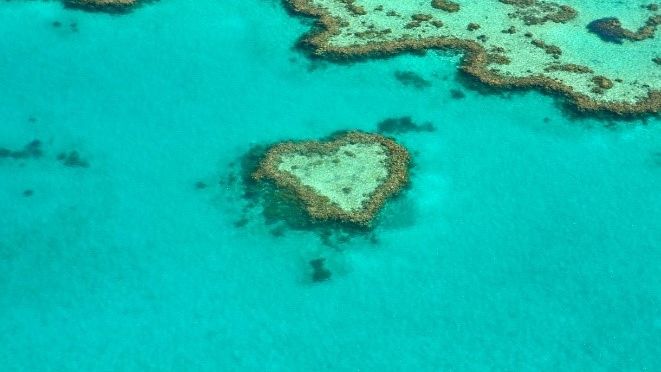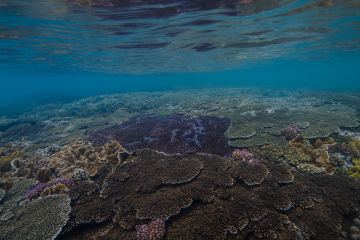Media Release ·
Saving the Great Barrier Reef through innovative partnerships

Australia’s leading research organisations will unite to design ways to build resilience and repair the global icon, the Great Barrier Reef, following today’s Federal Government announcement of $60 million for measures aimed at protecting the Great Barrier Reef.
This package of measures, unveiled at the Australian Institute of Marine Science (AIMS), includes a $6 million concept feasibility phase led by AIMS with CSIRO and other partners, including the Great Barrier Reef Marine Park Authority, Great Barrier Reef Foundation, James Cook University, The University of Queensland and the Queensland University of Technology to develop a new substantive Reef Restoration and Adaptation Program.
The funding is recognition of the immense economic and social values of the Great Barrier Reef in this the International Year of the Reef.
AIMS, CSIRO and Great Barrier Marine Park Authority have a long history of working together in the Great Barrier Reef World Heritage Area. The Reef Restoration and Adaptation Program takes this historical collaboration to a new level, involving many more national and international partners.
It will assess the benefits, risks and costs of existing and novel technologies to assist recovery, repair and build resilience of the Reef. Like many coral reefs around the world, the Great Barrier Reef is under increasing pressure from a range of threats, particularly climate change.
The package also includes $10.4 million to control the coral-eating crown-of-thorns starfish, $4.9 million to boost the Great Barrier Reef Marine Park’s Joint Field Management program and $36.6 million to further improve the water entering the Reef.
“Boosting the Great Barrier Reef’s resilience so it can withstand the increasing pressures from climate change and other threats is more critical than ever,” Great Barrier Reef Marine Park Authority Chairman Dr Russell Reichelt said.
“This funding will enable us to protect live coral cover by expanding our crown-of-thorns starfish control program. Ramping up our on-water presence in the Marine Park to improve compliance with Reef-wide zoning and doing more in- park conservation work will protect Reef biodiversity.”
“The Great Barrier Reef is unmatched for its beauty and wealth of marine biodiversity from which we, as a nation, derive significant cultural and economic benefit,” CSIRO Chief Executive Dr Larry Marshall said.
“This initiative sees the CSIRO continue to build on our long history of working with partners from inland to the outer reef to deliver novel technologies and solutions to help this global icon recover.”
“The Great Barrier Reef is valued at $56 billion as an Australian economic, social and iconic asset,” AIMS CEO Dr Paul Hardisty said.
“These methods will need to go hand in hand with greenhouse gas mitigation and conventional management, but they could be the difference in our efforts to preserve and protect the reef, and the tremendous value it provides to all Australians.”
“We have the brightest scientists and engineers working at the cutting edge of innovation to investigate ways to help reefs adapt to warming temperatures.”
AIMS, CSIRO and partner university scientists already have experience in helping corals become more heat tolerant and in engineering approaches to modify ambient conditions of reefs.
Rising ocean temperatures as a result of climate change pose the greatest challenge to the survival of the Great Barrier Reef, compounded by poor water quality and outbreaks of the major predators of corals, the crown-of-thorns starfish.
The Great Barrier Reef has experienced major losses of corals over the past few years, with a serious decline due to the back-to-back coral bleaching in the 2016 and 2017.
In spite of these setbacks, however, many areas of the Great Barrier Reef still show resilience, which presents a window of opportunity to act now, while there is still enough diversity to preserve and restore.
“For some time the Great Barrier Reef Foundation has considered reef restoration and adaptation to be the vital missing pieces in ensuring a future for our global icon,” Great Barrier Reef Foundation Managing Director Anna Marsden said.
“We’re delighted that the Australian Government has taken the major first step to launch this critical work for the Reef.
“In adopting a broad-based partnership approach, there is now also an unparalleled opportunity for philanthropists, businesses and individuals from around the world to invest in the future of the Great Barrier Reef and support this ambition, particularly as we celebrate the International Year of the Reef in 2018.”




